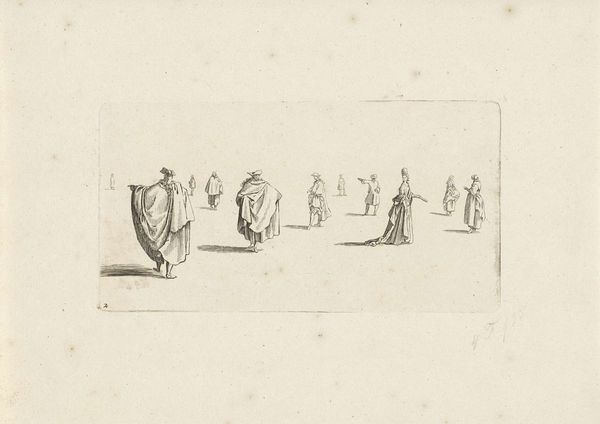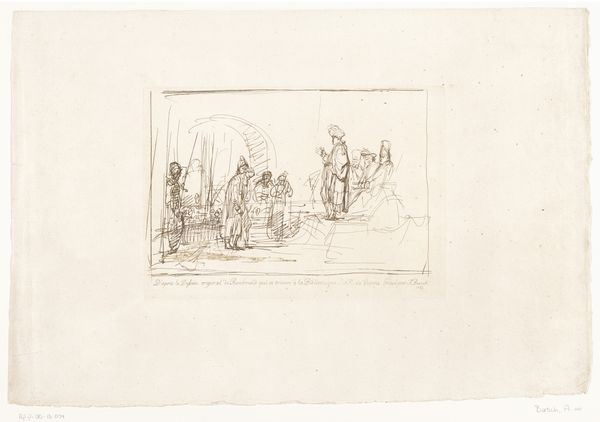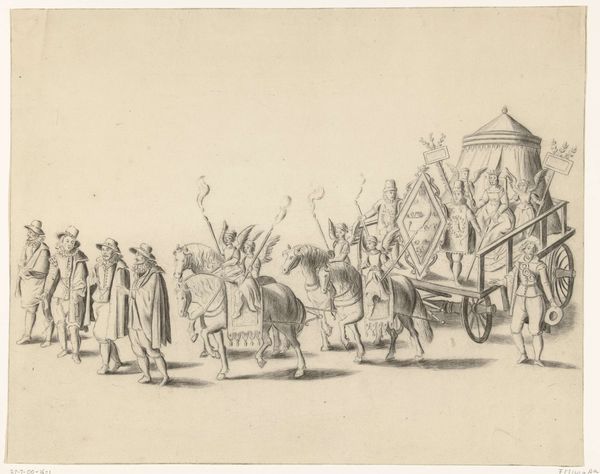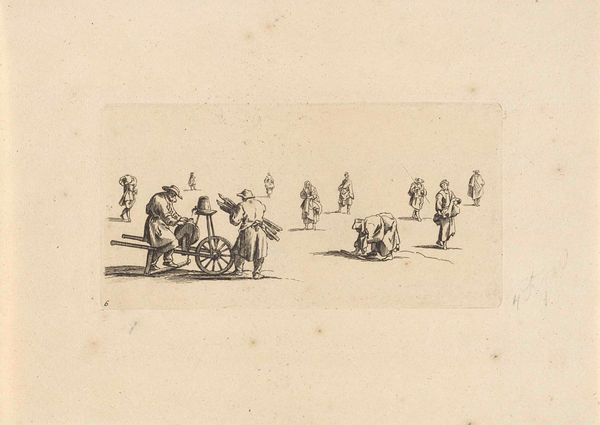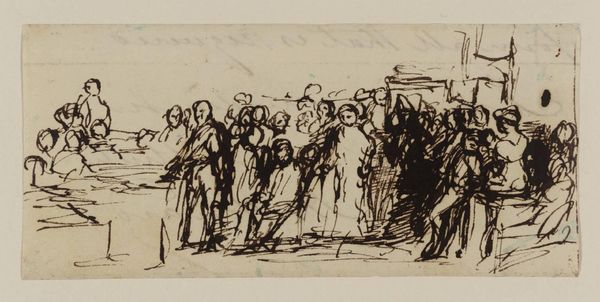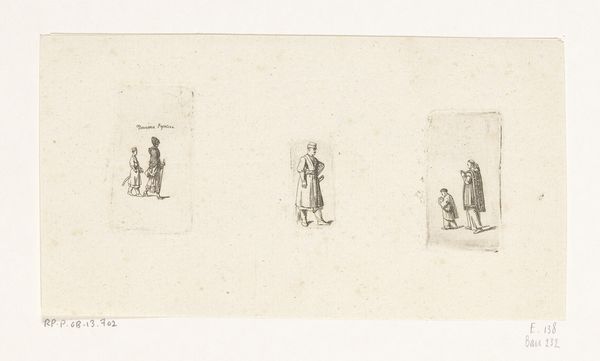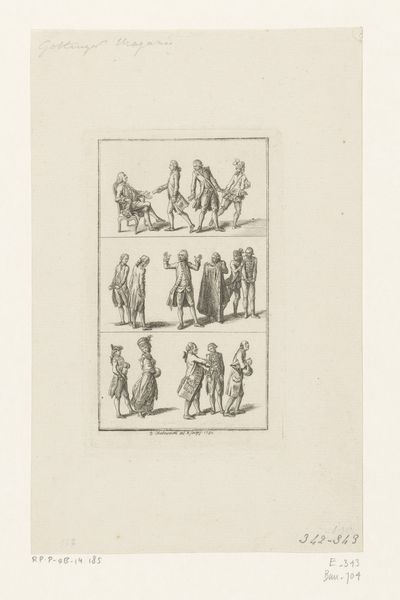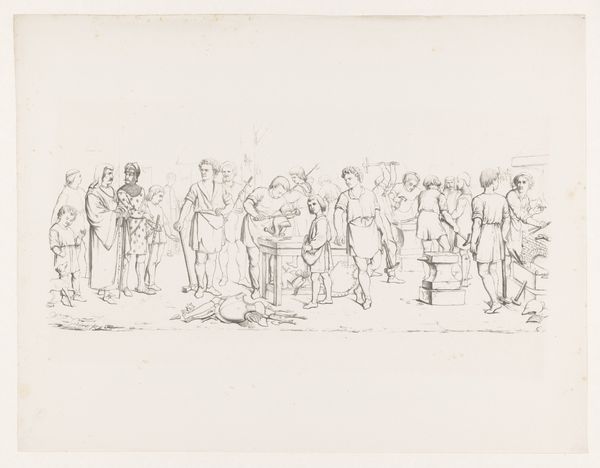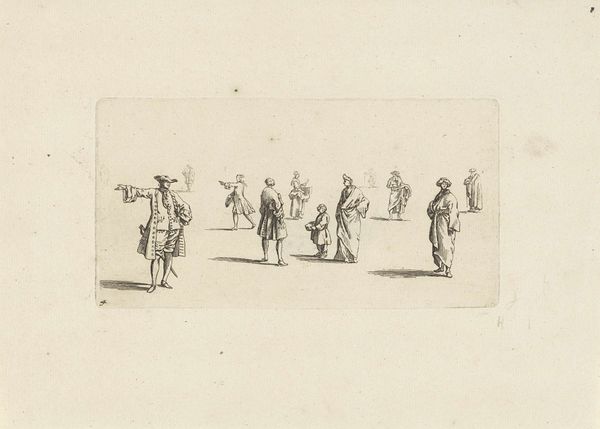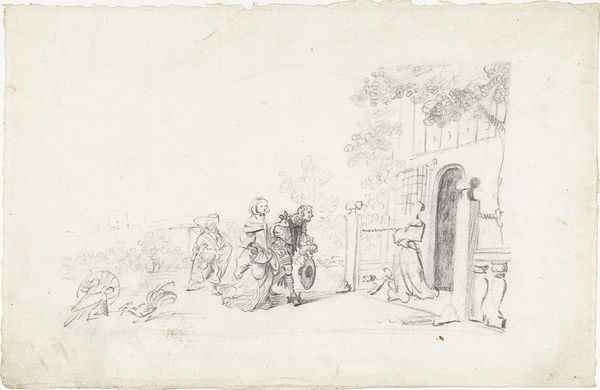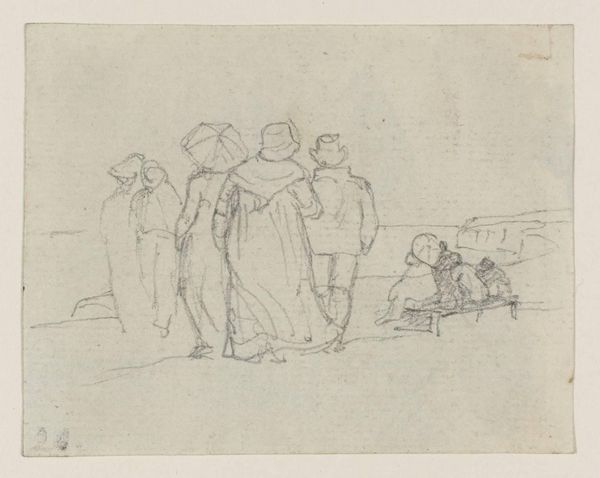
drawing, paper, ink, pen
#
drawing
#
light pencil work
#
quirky sketch
#
baroque
#
incomplete sketchy
#
paper
#
personal sketchbook
#
ink
#
idea generation sketch
#
sketchwork
#
pen-ink sketch
#
sketchbook drawing
#
pen
#
genre-painting
#
storyboard and sketchbook work
#
initial sketch
Dimensions: height 79 mm, width 153 mm
Copyright: Rijks Museum: Open Domain
Editor: This drawing, "Studieblad met zittende en staande figuren," made between 1675 and 1711, is done with pen, ink, and paper and is currently at the Rijksmuseum. It's a seemingly simple sketch of figures, but they feel so deliberately placed and staged. How do you interpret this work, particularly given its historical context? Curator: It is indeed an interesting sheet of figures. Looking at it from a historical perspective, this work exists within a specific system of patronage and artistic training. Sketches like these were often made in workshops, and later utilized by a Master. Consider, what type of socio-economic power dynamic do you think enabled its existence? Was it created for academic exploration, preparatory work for a larger project, or perhaps as a form of social commentary on the different classes and roles in Baroque society? Editor: I hadn't considered the power dynamic inherent in the production of the artwork itself. Seeing this as something preparatory changes things; perhaps this wasn’t just observation, but almost collecting character ideas. Curator: Precisely! The Baroque era was deeply interested in staging, not just on canvas, but also socially. Aristocrats performed specific roles, often through clothing and behavior. Does the drawing present those social power structures with sympathy or with subtle critiques? Who benefits from their display and documentation? Editor: I guess there’s a mix. Some figures are posed elegantly, while others, like the seated figure in the lower corner, are hunched over and seem quite vulnerable. Perhaps it's reflecting on the social realities of the time, a record of diverse social experiences presented simultaneously? Curator: It might. Artists have often used seemingly neutral sketches to embed nuanced social observations, or were forced to include certain subject matter to gain public favor. Ultimately, this seemingly simple drawing opens a window into the complexities of art production and its relationship to the society that fostered it. Editor: It’s amazing how much history is embedded in even the quickest sketch. Curator: Exactly! Each line whispers something about power, patronage, and performance.
Comments
No comments
Be the first to comment and join the conversation on the ultimate creative platform.

